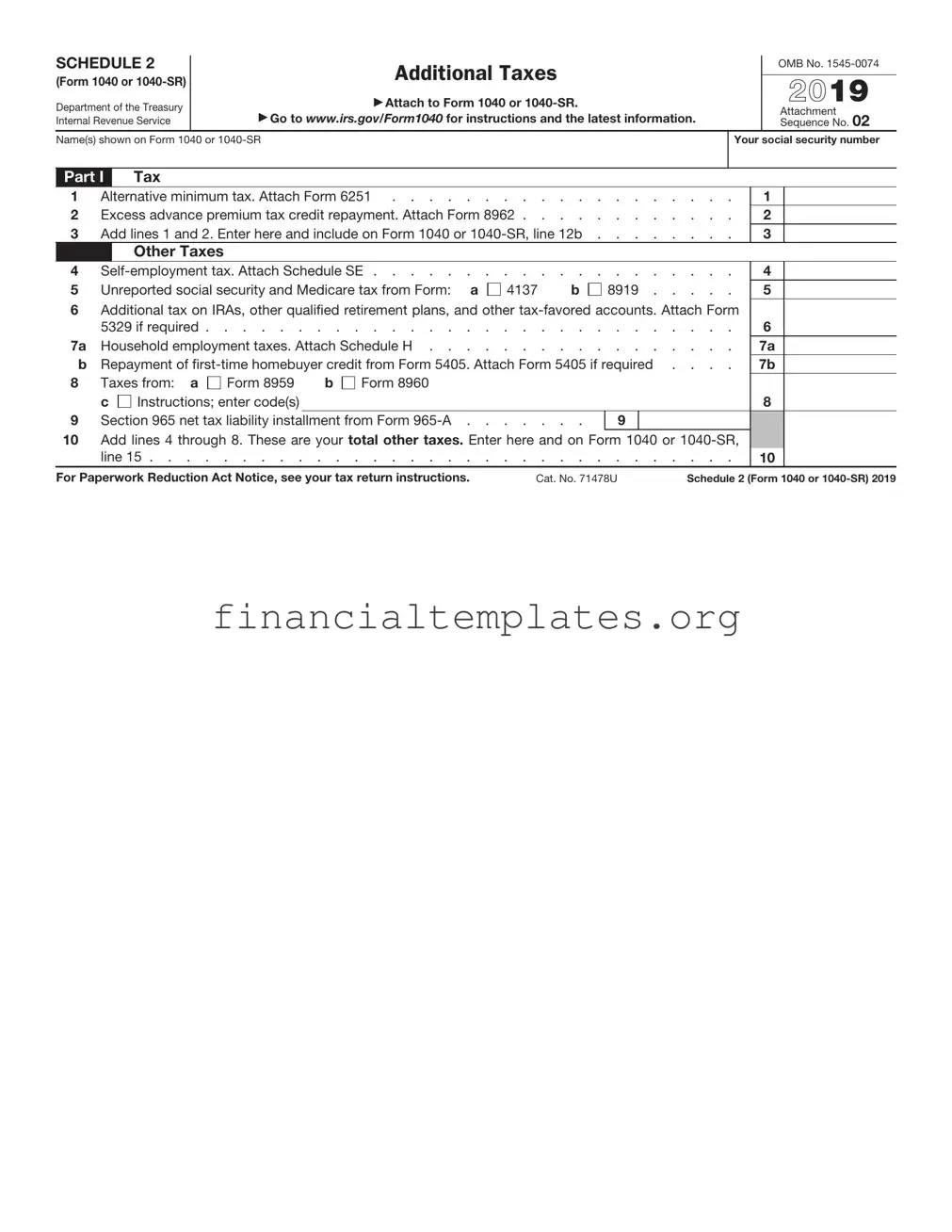The IRS Form 8962, Premium Tax Credit (PTC), bears similarity to the IRS Schedule 2 1040 or 1040-SR form as both involve calculations related to tax adjustments. Specifically, the Form 8962 is used to calculate the amount of premium tax credit an individual can claim, along with the reconciliation of any advance payments of the premium tax credit. Like Schedule 2, it impacts the overall tax liability or refund an individual may expect during tax filing.
Form 2210, Underpayment of Estimated Tax by Individuals, Estates, and Trusts, is akin to the IRS Schedule 2 in that both forms deal with taxes owed beyond basic income tax calculations. While Schedule 2 encompasses additional taxes people might owe, Form 2210 is specific to penalties for underpaying estimated taxes throughout the year. Each form ultimately adjusts the taxpayer's total tax payment responsibility to the IRS.
Similar to Schedule 2, Form 5329, Additional Taxes on Qualified Plans (Including IRAs) and Other Tax-Favored Accounts, involves calculating additional taxes that aren't directly related to standard income tax. Form 5329 focuses on taxes due to early withdrawals or insufficient distributions from retirement accounts, offering a detailed look into specific situations that could result in increased tax liability — akin to how Schedule 2 covers diverse additional tax scenarios.
Form 6251, Alternative Minimum Tax—Individuals, runs parallel to the IRS Schedule 2 1040 or 1040-SR in its focus on ensuring that taxpayers contribute a minimum amount of tax. While Schedule 2 adds to an individual's tax bill through various additional taxes, Form 6251 identifies whether the taxpayer owes alternative minimum tax (AMT), a separate calculation designed to prevent high-income earners from paying too little in taxes.
The Schedule SE (Form 1040), Self-Employment Tax, shares similarities with the IRS Schedule 2 form in that it deals with taxes not withheld by employers. Self-employment tax, covering Social Security and Medicare taxes for those who work for themselves, adds to one's tax due, akin to how Schedule 2 compiles various other additional taxes payable to the IRS.
Finally, Form 2439, Notice to Shareholder of Undistributed Long-Term Capital Gains, parallels Schedule 2's function as it pertains to informing shareholders of additional tax-related information that affects their overall tax liability. While distinctly aimed at handling undistributed capital gains from mutual funds or other regulated investment companies, it plays a role in the broader picture of an individual's tax situation, akin to the miscellaneous additional taxes addressed in Schedule 2.


